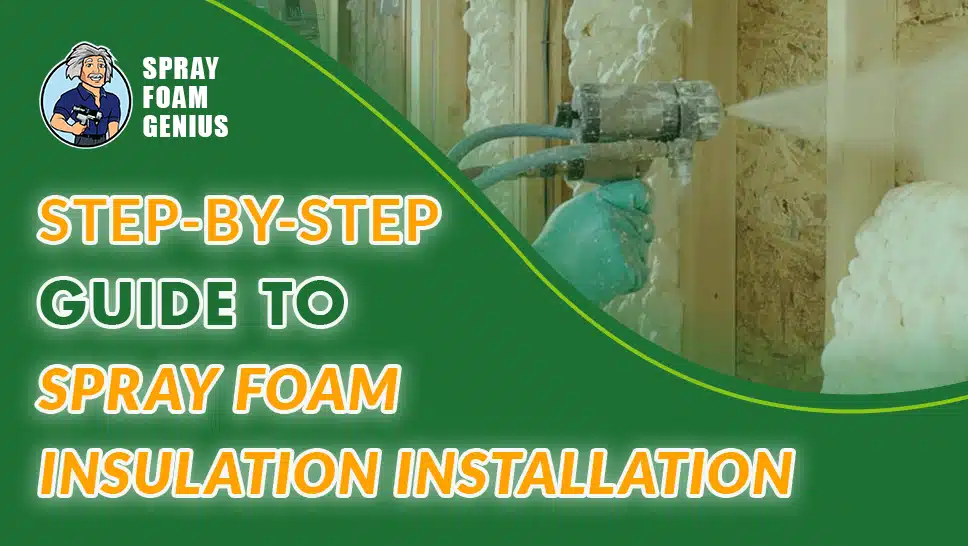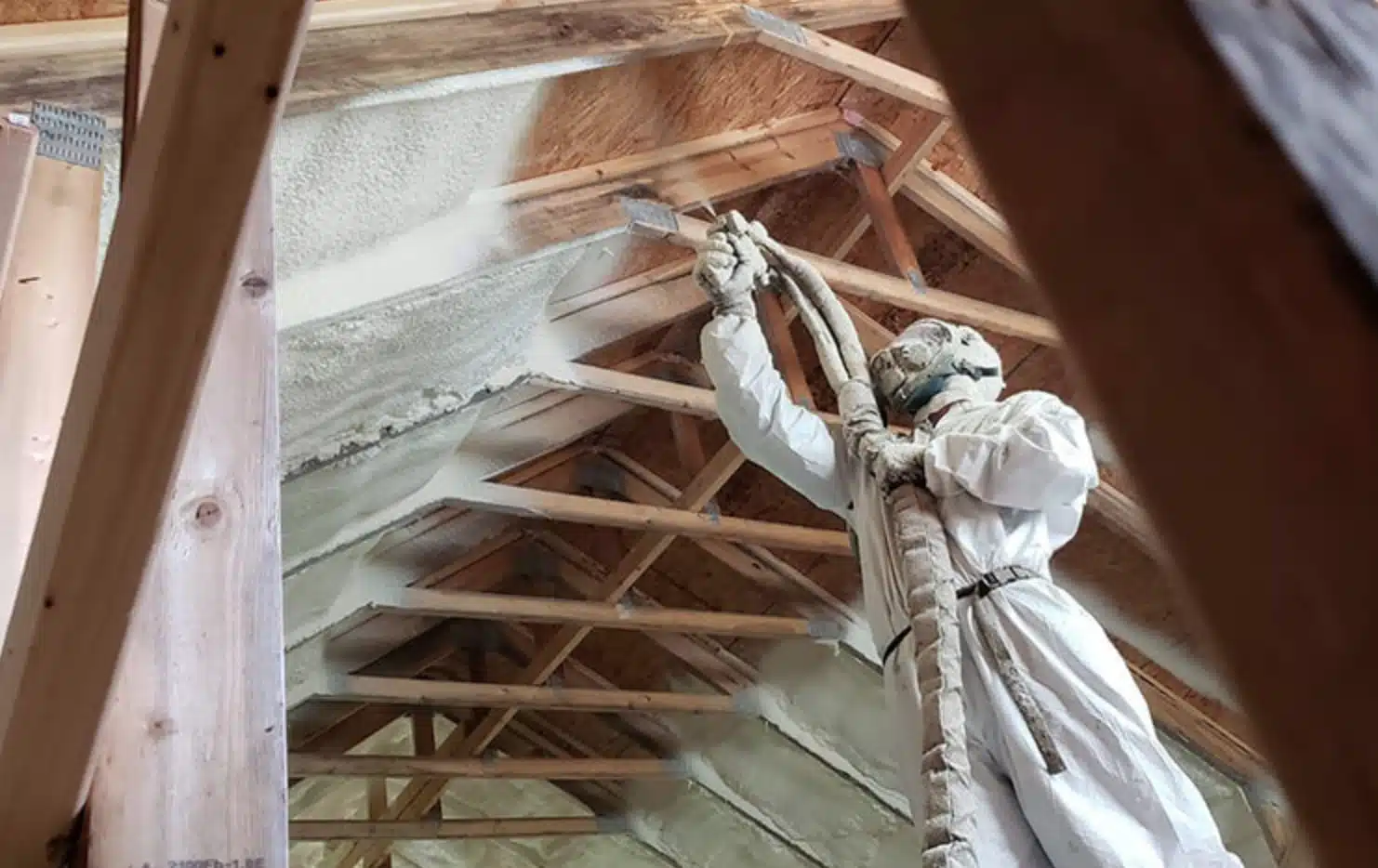
Spray foam insulation is one of the most effective ways to improve energy efficiency, reduce heating and cooling costs, and enhance the overall comfort of your home or business. However, installing spray foam insulation isn’t a DIY project for most people—it requires specialized equipment, knowledge, and experience. In this step-by-step guide, we’ll walk you through the spray foam insulation installation process, providing you with valuable insights and tips to ensure a successful outcome. Whether you’re a homeowner curious about the process or a contractor looking to refine your technique, this guide has you covered.
1. Understanding Spray Foam Insulation
Before diving into the installation process, it’s important to understand what spray foam insulation is and how it works. Spray foam insulation is a versatile and highly effective insulation material made from polyurethane. It is applied as a liquid that expands into a foam, filling gaps, cracks, and cavities to create an airtight seal. There are two main types of spray foam insulation:
- Open-Cell Spray Foam: This type is softer and less dense, making it ideal for interior applications like walls and attics. It provides excellent soundproofing and is more cost-effective.
- Closed-Cell Spray Foam: This type is denser and more rigid, offering superior moisture resistance and a higher R-value per inch. It’s often used in exterior applications, such as roofing and wall cavities, where moisture resistance is crucial.
Both types of spray foam insulation offer excellent thermal performance, but the choice between open-cell and closed-cell foam depends on the specific needs of your project.
2. Preparing for Installation
Proper preparation is key to a successful spray foam insulation installation. Here’s what you need to do before starting the actual spraying process:
a. Safety Precautions
Spray foam insulation requires the use of chemicals that can be hazardous if not handled properly. It’s essential to wear the appropriate safety gear, including:
- Protective clothing (coveralls)
- Gloves
- Safety goggles
- Respiratory protection (a full-face respirator is recommended)
Ensure the area is well-ventilated, and keep children, pets, and unprotected individuals away from the work site.
b. Surface Preparation
The surfaces where the spray foam will be applied must be clean, dry, and free of debris. Remove any dust, dirt, or loose material from the application area. If necessary, repair any cracks or holes that could affect the insulation’s effectiveness.
c. Covering Non-Target Areas
Spray foam can be messy, and it’s crucial to protect areas that shouldn’t be insulated. Use plastic sheeting or masking tape to cover windows, doors, electrical outlets, and other sensitive areas. Ensure that all items and surfaces not being insulated are thoroughly protected.
d. Temperature and Humidity Considerations
Temperature and humidity levels can affect the spray foam’s performance. Ideally, the ambient temperature should be between 60°F and 80°F, with humidity levels below 60%. Extreme temperatures and high humidity can cause the foam to cure improperly, leading to suboptimal results.
3. The Installation Process

Now that you’re fully prepared, it’s time to begin the spray foam insulation installation. Here’s a step-by-step guide to the process:
a. Setting Up the Equipment
Spray foam insulation requires specialized equipment, including a spray foam rig, hoses, and a spray gun. The rig typically contains two chemical components—an isocyanate and a polyol resin—that are mixed and heated in the rig before being sprayed. Ensure that the equipment is set up according to the manufacturer’s instructions and that all connections are secure.
b. Testing the Spray Gun
Before applying the foam to the target area, it’s important to test the spray gun to ensure it’s working correctly. Spray a small amount of foam on a test surface to check for proper mixing and spray pattern. The foam should expand evenly and adhere well to the surface. If the spray pattern is inconsistent or the foam doesn’t expand properly, adjust the equipment settings or consult the manufacturer’s guidelines.
c. Applying the Foam
Begin by applying the spray foam to the most difficult-to-reach areas first, such as corners, edges, and cavities. Hold the spray gun at a consistent distance from the surface (usually 18 to 24 inches) and apply the foam in a steady, sweeping motion. It’s better to apply the foam in thin layers, allowing each layer to expand and cure before adding the next. This approach helps prevent over-expansion and ensures an even application.
For open-cell foam, you may need to fill the cavity, allowing the foam to expand and be trimmed flush with the studs or joists. Closed-cell foam should be applied in multiple passes, with each layer allowed to cure before the next is added.
d. Trimming the Excess Foam
Once the foam has fully cured, any excess material that extends beyond the surface can be trimmed away using a utility knife or a specialized foam saw. This step is particularly important when installing insulation in walls or other areas where drywall or other finishing materials will be applied over the foam.
e. Inspecting the Work
After trimming, inspect the entire area for gaps, voids, or uneven spots. If you find any, apply additional foam to those areas and allow it to cure. A thorough inspection ensures that the insulation is uniform and provides the desired thermal performance.
4. Post-Installation Considerations
After the spray foam insulation has been installed, there are a few additional steps to take to ensure the longevity and effectiveness of the insulation:
a. Ventilation
Proper ventilation is essential after installing spray foam insulation, especially if it is applied in an enclosed area. Ventilate the space to remove any residual fumes and ensure good indoor air quality. This step is crucial for the health and safety of the occupants.
b. Drywall and Finishing
If the spray foam was applied to the walls, you can now proceed with installing drywall or other finishing materials. Make sure that the foam is properly cured and trimmed before beginning this step to ensure a smooth and professional finish.
c. Cleaning Up
Clean up any remaining foam, equipment, and protective coverings. Proper disposal of any waste materials, including unused chemicals, is essential. Follow local regulations for hazardous waste disposal to ensure environmental safety.
5. Benefits of Professional Installation
While it’s possible to purchase DIY spray foam kits, professional installation offers several key advantages:
- Expertise: Professional contractors have the knowledge and experience to ensure the foam is applied correctly, maximizing its effectiveness.
- Safety: Professionals are equipped with the right safety gear and know how to handle the chemicals safely, reducing the risk of exposure to hazardous materials.
- Quality: A professional installation often comes with a warranty, providing peace of mind that the job was done right.
- Efficiency: Professionals can complete the installation more quickly and efficiently, minimizing disruption to your home or business.
At Spray Foam Genius Marketing, we connect you with skilled spray foam contractors who are experts in the field. Whether you’re looking for installation services or need marketing solutions for your spray foam business, we’re here to help.
Achieve Optimal Insulation with Professional Expertise
Spray foam insulation is a powerful solution for improving energy efficiency, enhancing comfort, and reducing energy costs. However, the installation process is complex and requires specialized skills and equipment. By following the steps outlined in this guide, you can ensure a successful installation that delivers the maximum benefits of spray foam insulation.
If you’re considering spray foam insulation for your home or business, we highly recommend seeking professional installation services to achieve the best results. Contact us at Spray Foam Genius Marketing to learn more about our network of experienced contractors and how we can assist you with your insulation needs.
For expert advice and professional spray foam insulation services, Call us at 877-840-FOAM for USA and 844-741-FOAM for Canada visit our website at sprayfoamgeniusmarketing.com, or email us at [email protected] to get started.
Our team is ready to help you achieve optimal insulation for your property.
- 5 Google My Business Hacks to Double Your Leads for Spray Foam Insulation Contractors - January 14, 2025
- Why Spray Foam Contractors Cannot Ignore Reputation Management in 2025 - January 13, 2025
- Local SEO Secrets Every Spray Foam Contractor Must Know to Win in 2025 - January 13, 2025

